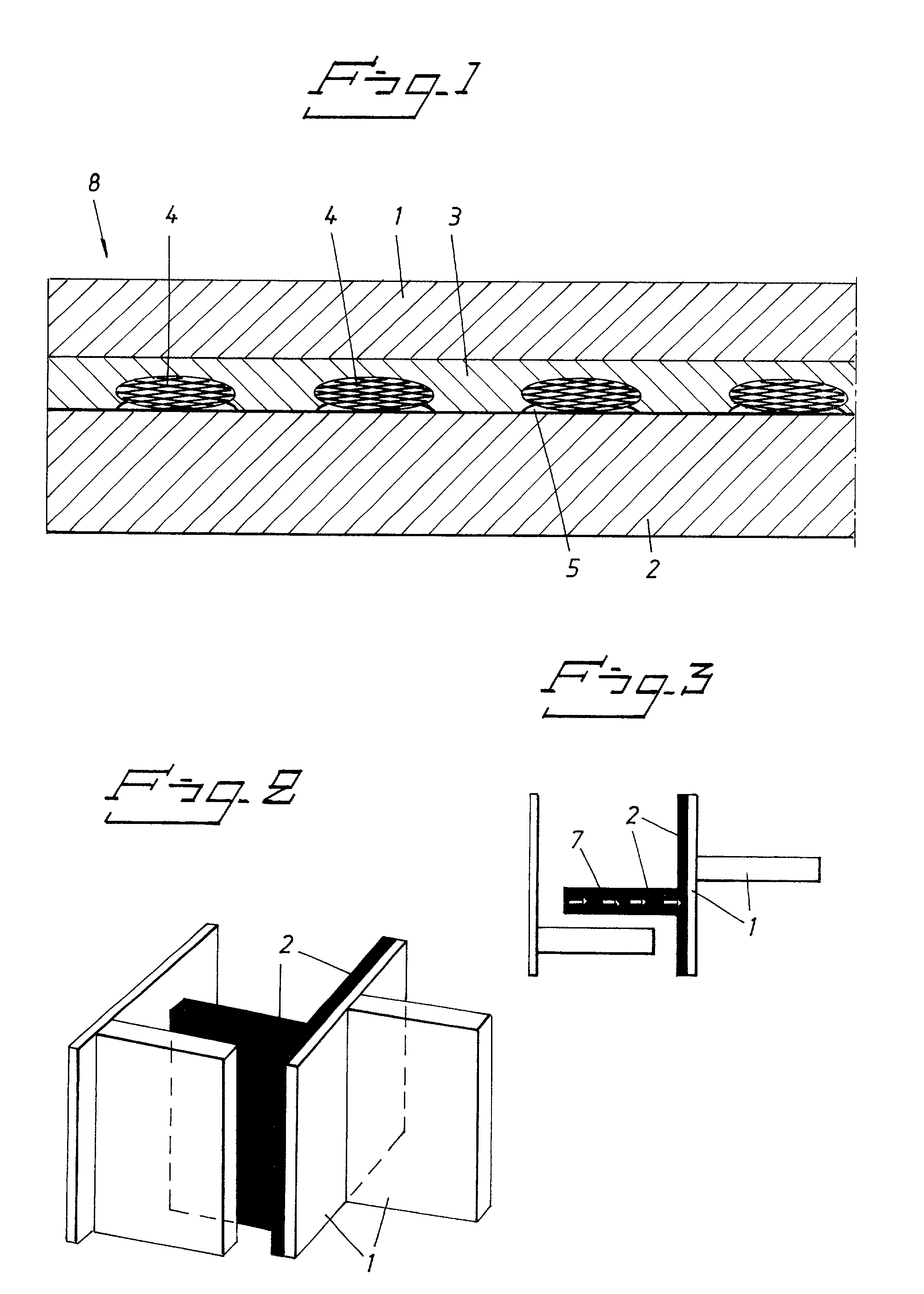Method and construction for ventilation of hydrogen gas
a technology for hydrogen gas and ventilation, applied in the direction of electrochemical generators, manufacturing tools, cell components, etc., can solve the problems of hydrogen blisters, difficult and complicated manufacturing of explosion bonded backplates, and reduce the strength of cathode-intermediate layer joints, so as to prevent the formation of hydrogen blisters
- Summary
- Abstract
- Description
- Claims
- Application Information
AI Technical Summary
Benefits of technology
Problems solved by technology
Method used
Image
Examples
example
[0045] Structural strength of backplate samples, i.e. the joined steel (cathode), silver (intermediate layer) and titanium (anode) layers, were measured before and after electrolysis, for production of sodium chlorate, for explosion bonded conventional electrodes without mesh and electrodes provided with mesh according to FIG. 2 and 3. Explosion bonded samples were taken from different parts of the backplate to investigate the influence of poor bonding, which were analysed in small parts by ultrasonic analysis. The sample was 0.12 m.times.0.12 m.times.0.030 m of the backplate. The tests were run on the backplate samples in a four-unit chlorate cell. The temperature of the electrolyte was 65.degree. C. and the current density through the backplate was about 3-5 kA / m.sup.2.
[0046] In all the samples of the conventional electrodes, the structural strength after 10 days of electrolysis was lower than 1 MPa.
[0047] The samples provided with mesh maintained their original structural strengt...
PUM
| Property | Measurement | Unit |
|---|---|---|
| thickness | aaaaa | aaaaa |
| diameter | aaaaa | aaaaa |
| thickness | aaaaa | aaaaa |
Abstract
Description
Claims
Application Information
 Login to View More
Login to View More - R&D
- Intellectual Property
- Life Sciences
- Materials
- Tech Scout
- Unparalleled Data Quality
- Higher Quality Content
- 60% Fewer Hallucinations
Browse by: Latest US Patents, China's latest patents, Technical Efficacy Thesaurus, Application Domain, Technology Topic, Popular Technical Reports.
© 2025 PatSnap. All rights reserved.Legal|Privacy policy|Modern Slavery Act Transparency Statement|Sitemap|About US| Contact US: help@patsnap.com

